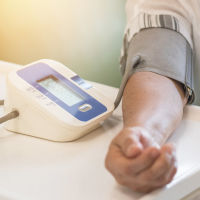An update of the 2014 AHA/ACC/HRS Guideline for the Management of Patients with Atrial Fibrillation has been released. The focused update includes revisions to the section on anticoagulation, revisions to the section on catheter ablation of atrial fibrillation (AF), revisions to the section on the management of AF complicating acute coronary syndrome (ACS), and new sections on device detection of AF and weight loss. The updates have been made in line with new data from clinical trials.
An important element of the new update is the addition of obesity to the list of traditional risk factors that should be targeted when controlling atrial fibrillation. This is based on clinical evidence that weight loss can improve AF.
The key points that must be noted from the Focused Update of the 2014 American Heart Association/American College of Cardiology/Heart Rhythm Society (AHA/ACC/HRS) Guideline for the Management of Patients With Atrial Fibrillation (AF) are:
- Edoxaban has been added to the list of nonvitamin K oral anticoagulants (NOACs [apixaban, dabigatran, and rivaroxaban]) that can be used for stroke prevention.
- NOACs are recommended over warfarin except in patients with moderate to severe mitral stenosis or a prosthetic heart valve.
- The decision to use an anticoagulant should not be influenced by whether the AF is paroxysmal or persistent.
- Renal and hepatic function should be tested before initiation of a NOAC and at least annually thereafter.
- In AF patients with a CHA2DS2-VASc score ≥2 in men or ≥3 in women and a creatinine clearance <15 ml/min or who are on dialysis, it is reasonable to use warfarin or apixaban for oral anticoagulation.
- Idarucizumab is recommended for the reversal of dabigatran in the event of a life-threatening bleed or urgent procedure.
- Andexanet alfa (recombinant factor Xa) can be useful for the reversal of rivaroxaban and apixaban in the event of life-threatening bleeding.
- Percutaneous left atrial appendage occlusion may be considered for at-risk AF patients with AF at increased risk of stroke who have contraindications to long-term anticoagulation.
- AF catheter ablation may be reasonable in symptomatic patients with heart failure and a reduced ejection fraction to reduce mortality and heart failure hospitalisations.
- In at-risk AF patients who have undergone coronary artery stenting, double therapy with clopidogrel and low-dose rivaroxaban (15 mg daily) or dabigatran (150 twice daily) is reasonable to reduce the risk of bleeding as compared to triple therapy.
- Weight loss combined with risk factor modification is recommended for overweight and obese patients with AF.
- In patients with cryptogenic stroke in whom external ambulatory monitoring is inconclusive, implantation of a cardiac monitor is reasonable for detection of subclinical AF.
Image Credit: iStock
Latest Articles
atrial fibrillation, AHA, ACC
The 2019 update of 2014 AHA/ACC/HRS Guideline for the Management of Patients With Atrial Fibrillation includes revisions to the section on anticoagulation, catheter ablation of atrial fibrillation and the management of AF complicating acute coronary syndr



























